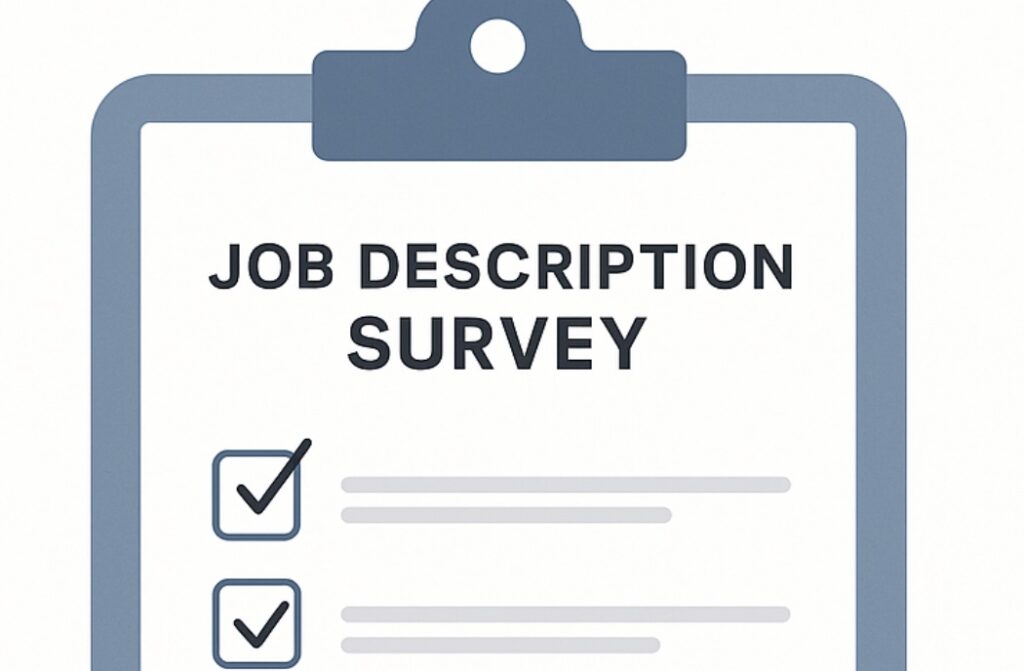- Job Description Process Improvement: How One Workflow Fix Saved 1,200 JDs from Chaos - December 4, 2025
- Affordable Job Description Management Software (That Still Do the Job Right) - November 19, 2025
- AI is Flooding Your Jobs With Unqualified Applicants (We’re Still Figuring Out How to Fix It) - November 18, 2025
A client of ours got asked to “do a quick job description survey” before a big rewrite project. They laughed. Not out loud, but in their head. Because there’s no such thing as quick when you’re staring at a pile of thousands of messy, outdated job descriptions.
If you’re in HR or TA, you probably already know: once you touch one job description, you’re going to uncover ten more issues you didn’t sign up for. Formatting chaos. Language that makes lawyers nervous. Recruiters going rogue in the ATS. Sound familiar?
Where They Started (and What I Wish They Knew)
They did what most folks do when assigned something fuzzy like a JD survey: opened Excel. That was mistake #1.
Their goal was to figure out:
- How many job descriptions existed (no one knew for sure)
- Which ones were current, outdated, or just plain bad
- If templates were being used (spoiler: they had 17)
- Where risky language was showing up (gender bias, legal no-no’s, etc.)
Turns out, those are hard things to answer manually, especially when JD content lives in different places like the ATS, HRIS, and a shared drive from 2012.
The 4-Part JD Survey That Worked

After lots of tab-hopping and guesswork, they landed on a 4-part survey approach that gave answers fast — and got leadership on board with the rewrite.
1. Inventory Audit
They pulled a list of every unique job title and job description. Then tagged them as: Current, Needs Review, Outdated, or Duplicate. That alone gave them clarity they’d never had before.
2. Formatting Consistency Check
They sampled 10 random JDs from each department and reviewed them for structure. Some had six sections, some had two. Some looked like a job post, others like a legal memo. Yikes.
3. Language Review
They ran a bias and compliance scan on a sample set using Ongig’s Text Analyzer. It flagged things like “digital native” and “young and energetic” — language that raises red flags fast.
4. Stakeholder Survey
We recommended they ask hiring managers and recruiters these 5 questions:
- How often do you edit JDs before posting?
- Do you trust the content in your JD library?
- What’s the hardest part of using current JDs?
- Have you ever lost a candidate due to a JD?
- What one thing would you change about our job descriptions?
The answers? Brutally honest. One recruiter admitted she always rewrote JDs because the originals “sounded like a robot with a law degree.”
What They Did With the Results
We helped them package everything into a simple slide deck:
- How many JDs they had
- How many needed help
- What the risks were (brand, compliance, experience)
- What success could look like with a better system
We also helped them create a before-and-after example of a rewritten JD. That one slide sold the whole project.
Why I Wrote This
If you’ve been asked to run a job description survey, or your team’s gearing up for a big rewrite, you don’t have to start from scratch (or suffer through spreadsheet chaos).
This is exactly why we built Ongig. Our platform helps you find, fix, and future-proof your job descriptions — fast. From compliance scanning to templating to content analytics, we’ve got your back.
Request a demo to see how Ongig can help you turn survey chaos into JD clarity.
FAQs
What is a job description survey?
A job description survey is a structured review of your organization’s JD content — assessing formatting, accuracy, compliance, and consistency.
Who should run a JD survey?
Usually HR, TA, or Compensation teams take the lead — especially if you’re preparing for a rewrite, compliance update, or rebranding effort.
What tools help with a job description audit?
Platforms like Ongig provide automated scans for bias, formatting, and compliance issues — making your audit way faster and more accurate.
How often should you review job descriptions?
Ideally, once a year — but at minimum, anytime there’s a brand refresh, new leadership, or legal/policy update.
How do I present JD survey results to execs?
Keep it visual and simple. Focus on risks, opportunities, and 1-2 clear next steps. Before/after examples go a long way.
